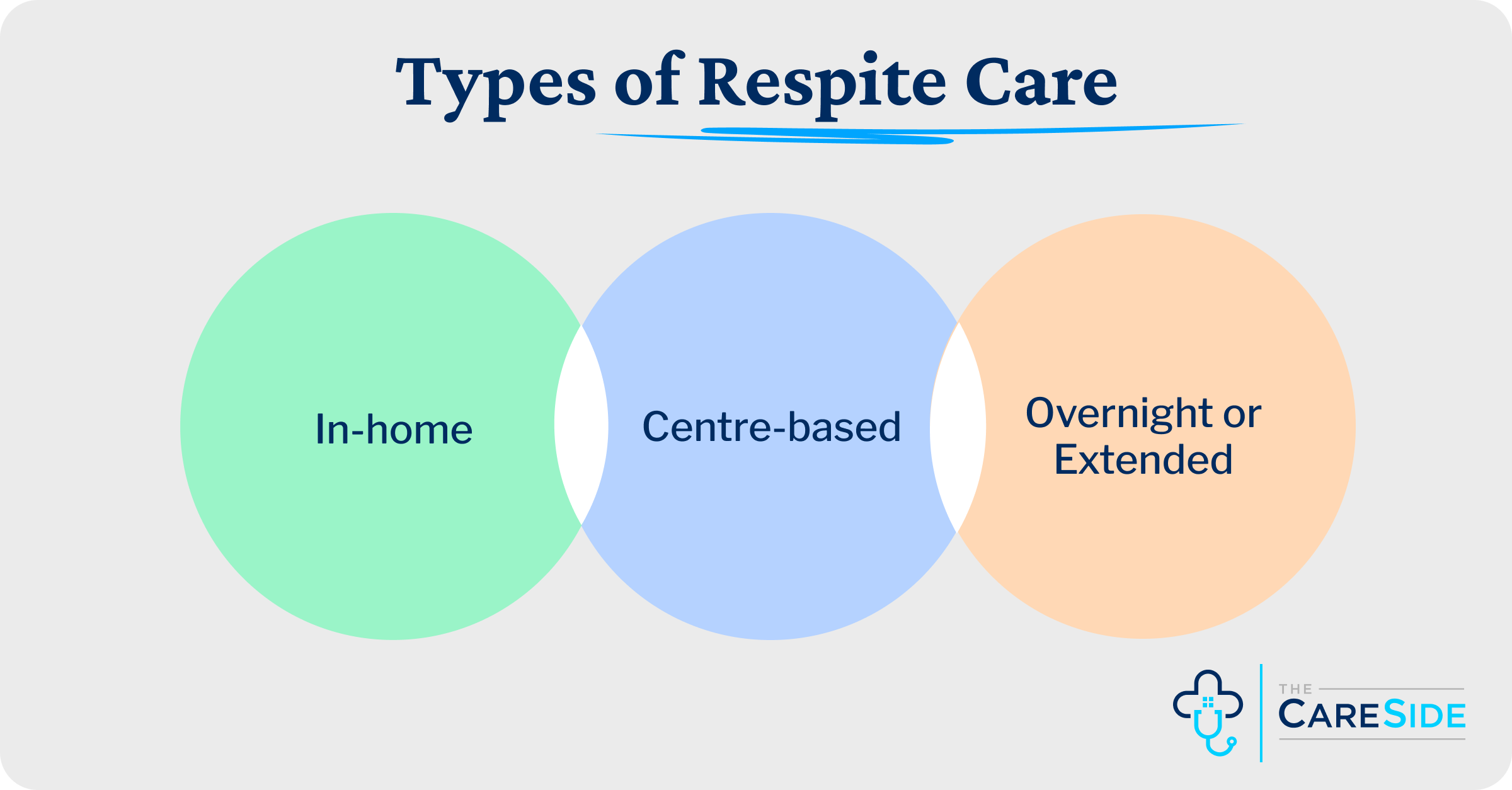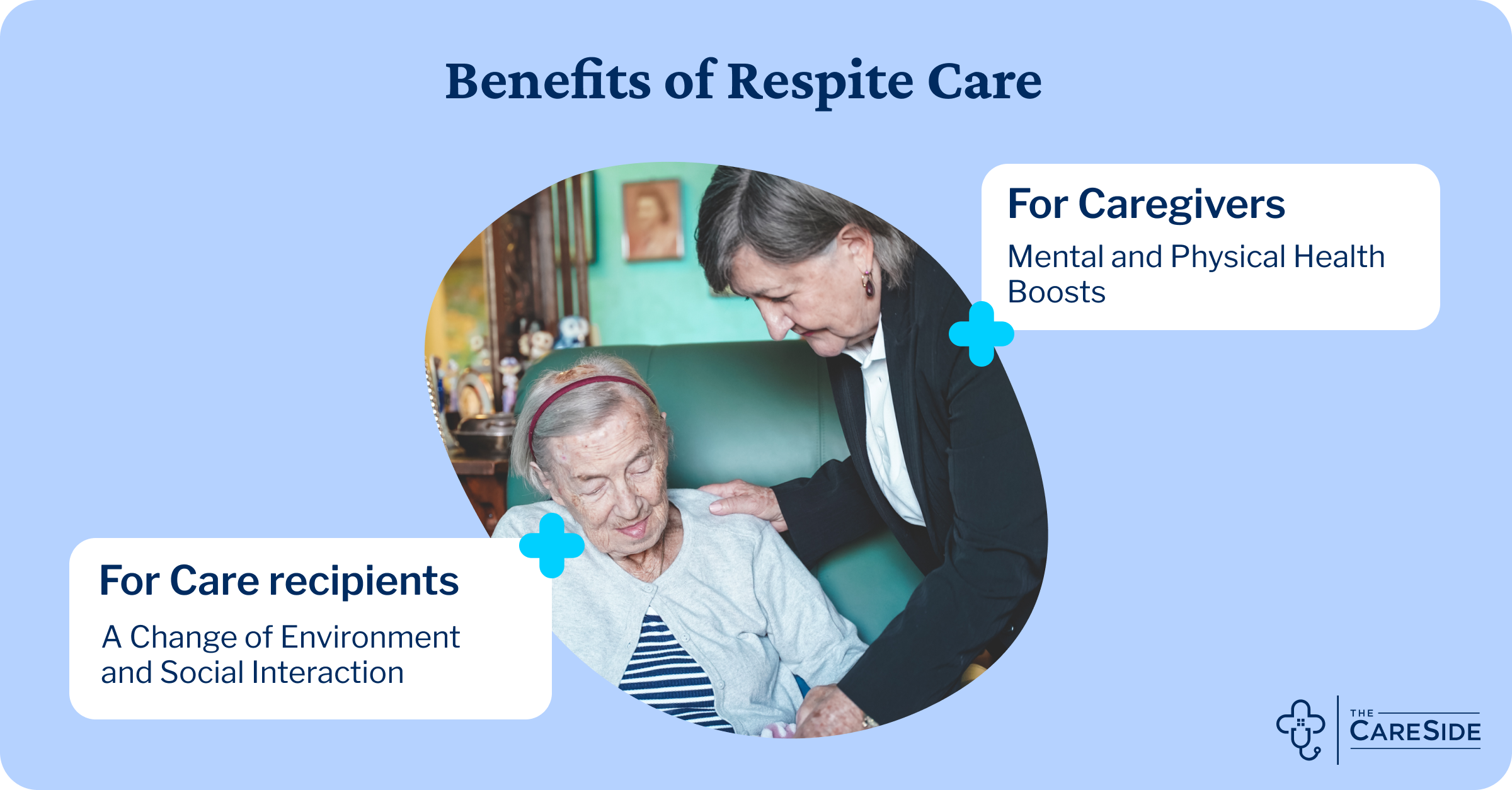Understanding Respite Care
The Basic Definition: What is Respite Care?
If there’s ever an emergency on an airplane, passengers are instructed to secure their own oxygen masks first before helping the people around them. Though it might not be obvious, it’s actually a selfless act: if you secure your own mask first, you can maintain consciousness, stay alert and offer assistance to those around you.
Respite care is a lot like that.
As a carer, you need to look out for yourself just as much as the person you care for.
Respite care gives you that breather. It provides short-term breaks so primary caregivers can step away, however temporarily, to care for themselves and focus on their own well-being—all while ensuring care recipients are left in safe hands.
Why It Matters: The Importance of Breaks in Caregiving
It’s easy to lose yourself in the day-to-day routine of caring for a loved one or family member. Caring for someone you love can be a joyful act, but the fact is, no matter how much you love that person, burnout happens.
Unfortunately, many carers in Australia don’t step away for a breather until they’re forced to by a health crisis of their own. The exhaustion, stress and emotional toll of being a primary carer is enough to overwhelm anyone.
Respite care is like a lever you can pull to prevent that burnout.
It’s a short-term reprieve that allows you to step back, do what you need to do for yourself and regain balance in your own life. It opens up the necessary space you might need for your career, your children or a quiet weekend holiday. When you leverage respite care in that way, you’re doing what’s best for you and the person you care for—in other words, you’re putting your own oxygen mask on first.
Types of Respite Care: Finding the Right Fit
Respite care is a flexible tool.
It can take place in the care recipient’s home, at a residential care facility or at a designated community centre. It can be several hours a week, or it can be stretched out while primary carers go on holiday.
There are different types of respite care available and you can mix and match them to fit your needs.
- In-home Respite Care: A professional care provider visits the care recipient’s home, enabling primary caregivers to step away for a window of time. This type of respite care allows care recipients to remain in the comfort of their own homes. It’s typically available during the day and overnight.
- Centre-Based Respite: Staffed by trained respite workers, centre-based respite options provide care recipients with opportunities to socialise and interact with others. At these care centres, recreational and group activities offer a pleasant change of pace for participants who might otherwise be cooped up at home. Respite care centres are typically open during daytime hours, and some even provide transport.
- Overnight or Extended Respite Services: In the event a primary caregiver has to step away for an extended period of time, respite workers can be brought in to stay at the care recipient’s home for multiple nights. Longer breaks for caregivers can also be bridged with cottage respite and residential respite care, during which care recipients stay in an aged care accommodation setting or aged care home. Click here to learn more about extended respite care services.
Benefits of Respite Care: More Than Just a Break
Why is respite care beneficial?
It’s more than just a break from the normal arrangement: it’s actually an opportunity for carers and care recipients to shake things up, gain some new perspective, learn about themselves, and return with a refreshed sense of vigor and appreciation.
For Care Recipients: A Change of Environment and Social Interaction
One thing the entire world learned during the COVID-19 pandemic is how challenging isolation can be. It’s an unfortunate truth that for many care recipients in Australia, isolation persists on some level whether there’s a pandemic happening or not.
Respite care alters that paradigm by giving care recipients the opportunity to socialise with new people, and in some cases, leave their homes for a few hours every week to enjoy recreational activities and forge new connections. That sort of positive stimulation not only has the chance to improve the bond between you and your loved one, but it can also reduce their dependence on you as their circle of trust grows.
For Caregivers: Mental and Physical Health Boosts
Caregiving is a tough job.
Check that—it’s a really, really tough job.
In order to ensure you’re securing your own oxygen mask first, you need to take care of yourself—whatever that might mean to you.
Primary carers often wrestle with stress, resentment, depression, and even guilt. Mountains of caregiving responsibilities can quickly overshadow everything else, leaving carers burnt out and overwhelmed.
Pulling the respite care lever gives you a chance to focus on your own physical, mental and emotional well-being. It can create the space you need to enjoy a holiday, rekindle a hobby, or even seek out care for yourself through carer support groups and professional counseling.
Maintaining your own identity and health empowers you to be the best version of yourself, and the person you’re caring for only stands to benefit from that.
Finding and Accessing Respite Care Services
Where to Start: Resources and Organizations
Government-funded respite provides up to 63 days of respite care in a year, with options to extend that by an additional 21 days upon approval.
The first step to receiving respite care is determining eligibility through My Aged Care. On the My Aged Care website, you and your loved one can answer a few questions and apply for an assessment with the Aged Care Assessment Team (ACAT).
Alternatively, you can also reach out to Carer Gateway (1800 422 737), an Australian Government program providing free services and support for carers. Contact them to learn about your respite options, local services in your area, and tailored support packages.
Respite Care Costs and Funding: Understanding the Financial Side
Subsidised respite care is available through the Commonwealth Home Support Programme (CHSP), Home Care Package (HCP) and National Disability Insurance Scheme (NDIS) funding, and the Department of Social Services for those who qualify. Private respite care services are also an option, but they can be expensive and are not covered by any government-funded programs.
Unlike other aged care services, respite care does not require a means assessment. The amount you pay depends on the type of respite care you choose. Visit My Aged Care to learn more about respite care fees, including basic daily fees and common service fees.
Choosing the Right Service: Questions to Ask and Things to Look For
Like with any care-related decision, asking the right questions is one of the most important things you can do while considering your respite care options. That’s especially true if you’re exploring respite options outside the care recipient’s home.
In that case, it’s always a good idea to visit the facilities, observe staff members and gain a general sense of how each location operates. Some questions you might ask include:
- Are the care workers trained? What is their level of experience?
- What is the ratio of care workers to care recipients?
- Is the facility equipped for special needs, such as dementia?
- What are some of the daily activities?
- Are meals provided? What about transportation?
Emergency Respite Care
Respite care is generally planned in advance, but sometimes that isn’t possible.
Emergency respite care is available on short notice for unexpected situations, such as when a primary carer falls ill or gets injured.
To arrange emergency respite care, visit the Carer Gateway website or call them at 1 800 422 737. Carer Gateway is a government hub for carers, and it provides access to support and assistance across Australia. When you call, a local service provider will lay out your options and schedule emergency respite care based on availability.
The Australian Government also recommends having an emergency care plan in place so you can quickly hand off your care duties to someone else should the need arise. Your emergency care plan should cover all pertinent pieces of information, including the needs of the person you care for, details about medications, and emergency contacts. Click here to learn more about creating an emergency care plan.
Summary
When you’re constantly looking out for the needs of someone else, it’s very easy to lose track of your own. Just remember: securing your own oxygen mask first isn’t a selfish act. In fact, it’s the exact opposite.
Short-term breaks aren’t only acceptable, they’re necessary. Respite care provides those breaks and comes in a variety of different forms, enabling you to mix and match to fit your needs and the needs of your loved one. Emergency respite care is also available in a pinch through Carer Gateway.
Here are some final tips to help you on your respite care journey:
- Learn about the condition: Research the needs or conditions of the person you care for and how to best attend to them. That education and first-hand experience will empower you to be more effective, confident and satisfied, especially when it comes to finding respite care.
- Assess their needs: While searching for respite care, consider the level and type of care that is required in your absence. Determine if there are any specific caregiver skills necessary, such as dementia care or stroke care, so that you can feel confident and at ease with your respite strategy.
- Work as a team: Respite care affects you and the person you care for, so make it a team effort if possible. Include your loved one in the decision-making process and communicate clearly about the specifics—such as how much time you’ll be away—while emphasising all the positives of respite care (i.e. socialising, breaking up the routine, etc.
- Define your role clearly: Family caregivers often don’t acknowledge that caregiving is separate from other roles in life, such as being a parent or spouse. Establishing that line of demarcation can bring clarity and help you feel less scattered.
- Stay organised: Use a calendar to lay out your caregiving time and respite time. Not only will this help you stay organised, but it will also make the process more objective by establishing a schedule for everyone to follow.
- Know when to say “no”: Recognize when you can’t give anymore and learn how to say “no” if necessary. Pull the respite care lever and use the tools that are available to you. Ultimately, that’s the best way to care for yourself—and the person you’re caring for.
Still need help?
If you still have questions about respite care or need help in any way, contact The CareSide on our website form or by calling 1300 85 40 80.
We are an approved provider managing home care packages. We understand how complex care can be. Our team can help you determine the best strategy for finding respite care—we’ll answer your questions, explain complicated government language, provide breakdowns of fees (such as basic daily fees), and assist you with whatever else you might need!









